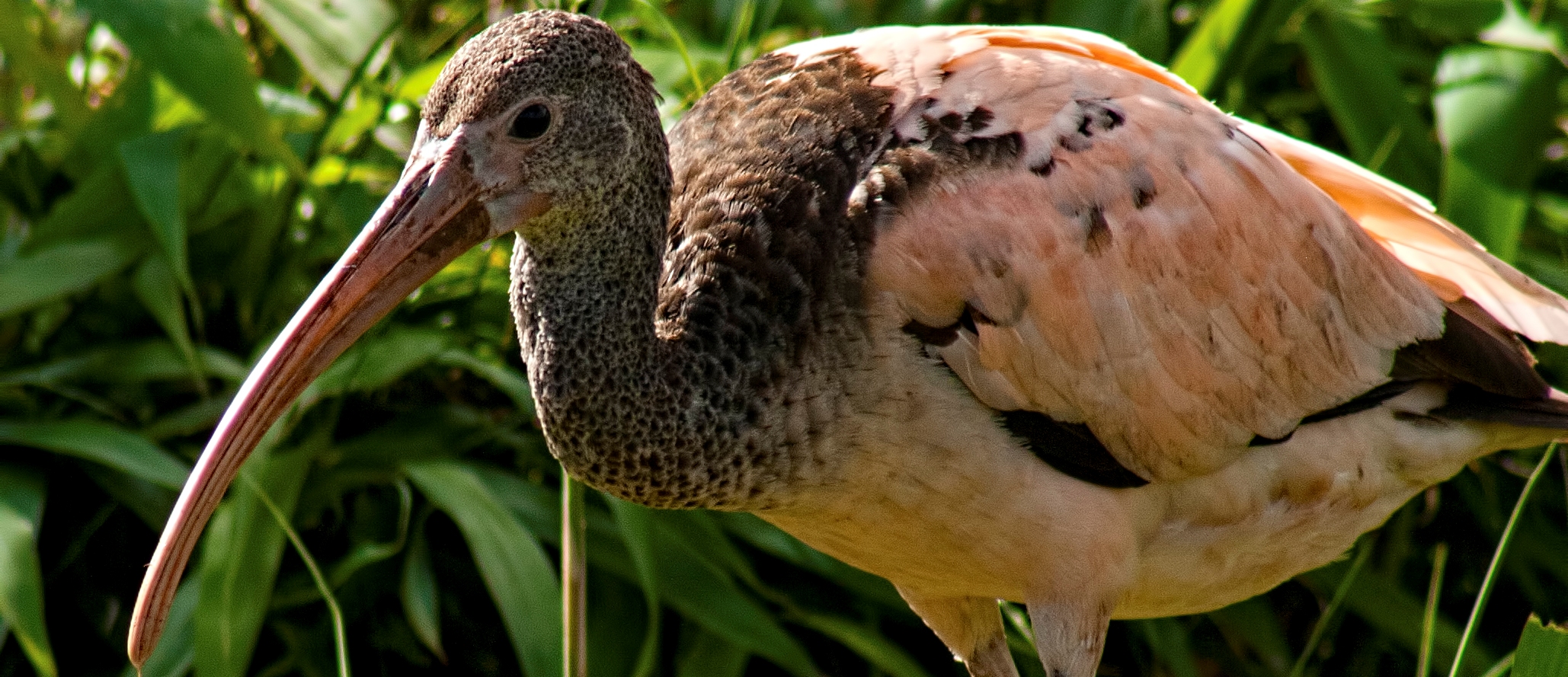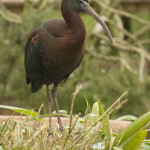Glossy Ibis
Plegadis falcinellus
This is the most widespread ibis species, found in wetlands, marshes and flooded grasslands of the warm regions of Europe, Asia, Africa, Australia, and the Atlantic and Caribbean region of the Americas.
Habitat: The Glossy Ibis nests colonially in trees, often with herons. The nest is a compact platform of twigs or reeds, situated in a tree, bush or reedbed. Breeding occurs during the summer months.
Threats: This species is a small slender ibis measuring 55-65 cm long with an 88-105 cm wingspan, and a long curved bill. Adult Glossy Ibises have the head, neck, back and underparts a rich chestnut-brown. The wings are black with a metallic green sheen on the ‘shoulders’. Non-breeders and juveniles have duller bodies. This species has a brownish bill, dark facial skin bordered above and below in blue-gray (non-breeding) to cobalt blue (breeding).
Food: It feeds on fish, frogs, insects and small reptiles. Information: Unlike herons, ibises fly with necks outstretched, and often flocks fly in lines. Ibis play a vital role in the overall balance of the world’s environment. They help humans all over the world to rid gardens and crops of insects and other small animals that are harmful to plants.





